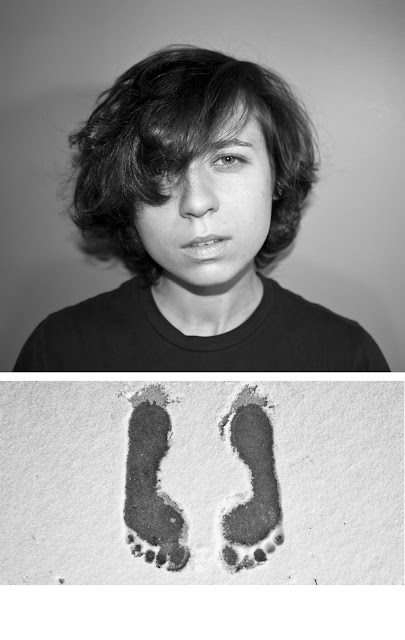Autumn&Beau
Composition: in this image, the focus was on the two figures facial expressions, and how they interacted with each other. the bottom image is showing how their feet interact with each other.
Method: i used a desk light and flash to take this photo. since it was night and indoor, the light source was not enough to get a good exposure. So I used flash and also a faster shutter speed to catch the moment.
Concept: couple. their shoes definitely reveal something about their personality. Autumn is very easy-going and Beau loves outdoor activities. They love each other very much.
Motivation: to capture a daily life moment.
Context: marriage.
Erica&Converse
Composition: i chose to use the easiest composition in these two images, placing the subjects in the center of the picture.
Method: I shot this photo indoor with a desk light covered with white cloth and a baking sheet on the other side of the subject's face to get some reflection.
Concept: Simplicity is the theme of this photo. High school senior with a pair of converse, and a sweet smile. Very simple and very natural.
Motivation: just to create a feeling of simplicity.
Context: high school life.
Jeff&bare feet
Composition: as the theme of this series of photos, it is a gain emphasize on the subjects face and the feet.
Method: desk light and flash. fast shutter speed
Concept: showing the emotion and the life of the person. Jeff is in the MSU break dance club. As a dancer, he uses a lot motions of his feet to practice. Motivation: showing ones mood and hobby.
Context: super senior. college. after college. transition.
Kim&Converses + High heels
Composition: in the bottom image, I asked the model to get all her shoes out, creating a chaotic feeling.
Method: indoor light, flash, fast shutter speed.
Concept: also showing a person's life and personality. Kim was on her way to the KCF banquet and she's wearing her high heels. But when asked about her favorite shoes, she took out a whole collection of her converse shoes.
Motivation: telling a story about someone.
Context: collections of shoes.
Joy&Snow
Composition: the figure and the feet in the center of the images.
Method: desk light, flash, fast shutter speed.
Concept: personality. Joy is a very joyful person but she has her sensitive side.
Motivation: capture a different side of somebody.
context: faith and life.











































